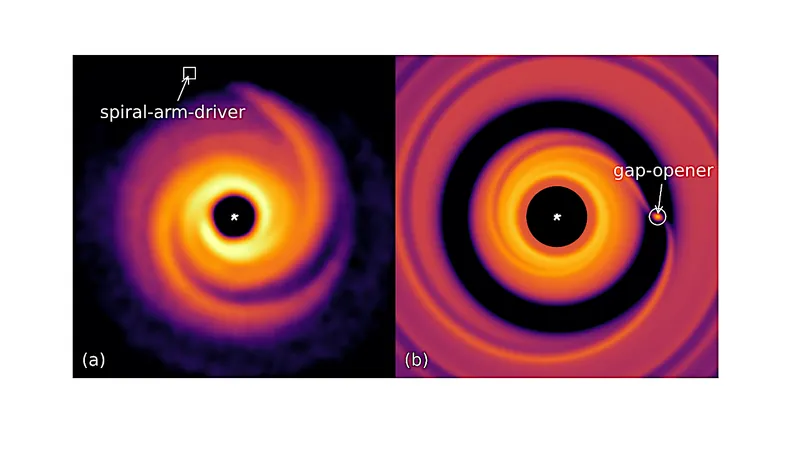
Unlocking the Secrets of Planet Formation: Habitable Worlds Observatory's Bold New Mission
2025-07-03
Author: Daniel
The cosmos has become a playground for discovery since the groundbreaking revelation of the first exoplanet circling a Sun-like star. Fast forward three decades, and we now know of nearly 6,000 exoplanets, each showcasing an astonishing variety that has transformed our understanding of planetary systems.
However, most of these celestial bodies orbit stars that are over a billion years old, which means they've long left the fertile grounds of planet formation behind. In stark contrast, we've only identified a modest two protoplanets—young planets in their formative stages—nestled within a single star system.
Imagining the Unimaginable: The Role of Protoplanetary Disks
In the last decade, astronomers have captured stunning images of over 200 protoplanetary disks. These disks—early incubators of planets—often reveal remarkable features, including spirals and gaps that hint at the presence of protoplanets.
Enter the Habitable Worlds Observatory (HWO), equipped with state-of-the-art high-contrast imaging and integral field spectroscopy. This revolutionary facility is set to unravel the mysteries surrounding the birthing processes of planets.
A Game-Changing Proposal for Protoplanet Research
The HWO will embark on a mission to locate and image protoplanets nestled within these complex protoplanetary disks. By leveraging direct imaging techniques alongside advanced spectroscopic methods, researchers aim to identify and characterize these young planets and their surrounding environments.
This ambitious plan could potentially increase the catalog of known protoplanets by a staggering factor of 100, offering unprecedented insights into planetary formation theories and the interactions between planets and their birth disks.
The Implications: Understanding Our Cosmic Origins
By stretching the boundaries of our current knowledge, these observations will not only refine existing theories of planet formation and migration but will also provide crucial data on the evolutionary paths of planetary systems—including our own Solar System.
With the HWO poised to revolutionize our grasp of the cosmos, we stand on the brink of unlocking the secrets of how worlds are born.



 Brasil (PT)
Brasil (PT)
 Canada (EN)
Canada (EN)
 Chile (ES)
Chile (ES)
 Česko (CS)
Česko (CS)
 대한민국 (KO)
대한민국 (KO)
 España (ES)
España (ES)
 France (FR)
France (FR)
 Hong Kong (EN)
Hong Kong (EN)
 Italia (IT)
Italia (IT)
 日本 (JA)
日本 (JA)
 Magyarország (HU)
Magyarország (HU)
 Norge (NO)
Norge (NO)
 Polska (PL)
Polska (PL)
 Schweiz (DE)
Schweiz (DE)
 Singapore (EN)
Singapore (EN)
 Sverige (SV)
Sverige (SV)
 Suomi (FI)
Suomi (FI)
 Türkiye (TR)
Türkiye (TR)
 الإمارات العربية المتحدة (AR)
الإمارات العربية المتحدة (AR)